By The Biography Clearinghouse As we come to the end of another calendar year, we reflect upon how much the world can change in just a few short months. Political turmoil, violence, and war threaten the lives of millions. Climate scientists tell us that 2023 was the hottest year on record. Devastating fires and floods ravaged cities, towns, and forests alike. These catastrophes may feel unique to our life experience, so it helps to remember that people before us have faced hardships too. Again, we turn to biographies to learn from the people among us and those who came before us. What lessons in leadership can we find? How do artists, faith leaders, scientists, activists, educators, and others work towards goals? Handle setbacks? Cope with prejudice? Persevere while facing devastation? Work collaboratively to create change? In this year-end blog entry, we share a few picture book biographies from 2022 and 2023 that were inspiring to us, as well as preview a 2024 biography. With best wishes for peace in the New Year, The Biography Clearinghouse Team
Winter Hiatus Announcement
By Denise Dávila on Behalf of the Biography Clearinghouse
Using Viewfinders Sister Corita Kent authored provocative multimodal compositions that were inspired by looking closely at ordinary objects and were imbued with intertextual meanings. As suggested in Make Meatballs Sing, much of her work began by focusing her attention on specific elements and blocking out others. She employed cardboard viewfinders with her students as tools for developing the skill of looking. These next activities build upon the use of viewfinders in the classroom. They are adapted from the Make Meatballs Sing Curriculum Guide.
Denise Dávila is an assistant professor at the University of Texas at Austin. She studies children’s literature and researches the home literacy practices of families with young children in under-resourced communities. By Erika Thulin Dawes and Xenia Hadjioannou on behalf of the Biography Clearinghouse  We close out the school year immersed in social strife and conflict. Our students are grappling both with big questions about humanity and substantial uncertainties about everyday life. Recent research describes rising mental health concerns for young people (Acheson, 2020; Cowie & Myers, 2021; Samji et al. 2022) and it’s not surprising that maintaining optimism is challenging in the context of war, a global pandemic, and climate change. As educators, we are seeking ways to provide our students with grounding and with hope. And we believe that biographies, life stories of inspiring people, can help to provide both an anchor and inspiration. Our latest Biography Clearinghouse entry features Duncan Tonatiuh’s picturebook biography Soldier for Equality: José de la Luz Sáenz and the Great War. Using his trademark illustrative style, digital collage inspired by Mixtec Pre-Columbian art, Tonatiuh describes the World War I experiences of ‘Luz’; a teacher, activist, Texan, and a person with Mexican heritage. Toniatiuh’s biography of José de la Luz Sáenz is a powerful narrative of the transformative power of literacy. Luz’s education and multilingualism were instrumental in his life trajectory; his knowledge allowed him to navigate the battlefield safely, keeping him out of the trenches and instead in a fortified command post for the intelligence service. He developed his skills in organizing while teaching English to Mexican American soldiers. And upon his return to teaching when the war was over, he turned his outrage over unequal schooling for Mexican American children into activism, establishing the League of United Latin American Citizens (LULAC), an organization that helped to end the segregation of Latinx children from white schools. In our Biography Clearinghouse entry, we provide an interview with Duncan Tonatiuh and a collection of teaching ideas to support student exploration of Soldier for Equality. These teaching ideas encourage students to consider the transformative power of literacy and the generative power of community organizing and activism. They include: an exploration of translanguaging and theme development in picturebooks; a history of and contemporary look at the experience of minoritized populations in the United States army; a call to allyship to counter bullying; a visual literacy exercise exploring traditional artistic motifs; and a tribute to teacher activists. Below is an excerpt of the teaching ideas in the Biography Clearinghouse entry for Soldier for Equality: José de la Luz Sáenz and the Great War:
Teachers as Activists
Citations Acheson, R. (2020). Research digest: The impact of the covid-19 pandemic on child, adolescent, young adult, and family mental health. Journal of Child Psychotherapy, 46(3), 429-440. https://doi.org/10.1080/0075417X.2021.1912810 Cowie, H., & Myers, C. (2021). The impact of the COVID‐19 pandemic on the mental health and well‐being of children and young people. Children & Society, 35(1), 62-74. https://doi.org/10.1111/chso.12430 Samji, H., Wu, J., Ladak, A., Vossen, C., Stewart, E., Dove, N., Long, D., & Snell, G. (2022). Review: Mental health impacts of the COVID‐19 pandemic on children and youth – a systematic review. Child and Adolescent Mental Health, 27(2), 173-189. https://doi.org/10.1111/camh.12501 Erika Thulin Dawes is a Professor of Language and Literacy at Lesley University where she teaches courses in children’s literature and early childhood literacy and is the program director of the graduate Early Childhood Education program. Erika is a former chair of NCTE’s Charlotte Huck Award for Outstanding Fiction for Children. Xenia Hadjioannou is an Associate Professor of Language and Literacy Education at the Harrisburg campus of Penn State University where she teaches and works with pre- and in-service teachers through various courses in language and literacy methodology. She is the Vice President and Website Manager of the Children's Literature Assembly, and a co-editor of The CLA Blog. The Bonnie Campbell Hill National Literacy Leader Award
|
| Woman on a Bridge #1 of 5: Tar Beach, 1988 Acrylic paint, canvas, printed fabric, ink, and thread Solomon R. Guggenheim Museum, New York. Gift, Mr. and Mrs. Gus and Judith Leiber, 1988 | But from an educator perspective, this important exhibit left out something important about the arts, access, and critical literacy. It didn’t pay much attention to the radical act of making this story quilt, and all of the ideas that it explores, available to young people in the form of another everyday object, the picturebook. In the book version of Tar Beach, narrator Cassie Louise Lightfoot, “only eight years old and in the third grade,” invites readers into an experience and conversation that the story quilt was asking museum audiences to consider. Cassie’s is a story of resistance and self-definition and an invitation through art and words, to encounter issues of class, race, place, history, and the future through what Ringgold has called a “fantastical sensibility.” Cassie’s story offers a word/picture narrative marked by sharp observation and critique but also beauty and humanization. |
| I left the exhibit thinking about how Tar Beach provides an object lesson in how the arts can support critical literacy. With its imprint on the social and cultural imagination of so many, Tar Beach reminds us that we can look to the humble picturebook to find sources of radical power. In these everyday objects that can traverse home, school, and everyday life, we can seek out art and words to explore issues of cultural significance, often with an eye toward joy and justice at the same time. So how can we harness the power and possibility of the arts that can be found in picturebooks? How can we invite and encourage deep critical literacy and inquiry? |
Adapted from the steps of art criticism, this protocol provides a framework for sharing picturebooks that aims to cultivate a critical practice. It guides the reader through a process of looking closely to notice what they might otherwise overlook and to use what they know about words and pictures to analyze and make sense of what they see. The stages offer a helpful way to support students of any age through a process and unfolding of critical engagement that relies upon attention to specific details in the work to guide thoughtful engagement and response. The protocol is intended as a facilitation guide for teachers. Wording should be adjusted for the audience/age of the reader.
Take inventory. Examine the cover of the book, the dust jacket and the endpapers. Look closely at the typography, the pictures, the words. Describe what you see and notice in detailed, descriptive language.
Use what you know about picturebooks and design to analyze the words and the pictures. Look at the colors, the lines, shapes, textures. Try to determine the media the artist used to make the pictures. Examine the style of the language the writer used. Look for patterns, repetition, rhyme. Draw attention to the picturebook as a unique form of the book that relies on the synergy of the words and the pictures by asking how the words and pictures work together: What do the words tell you that the pictures do not? What do the pictures tell you that the words do not? What happens in between the openings?
Use questions together to probe and deepen. Stop and ask questions about pages that are visually and/or verbally rich or complex. What sense do you make of this page? How do you know that? Why do you think the author or illustrator chose to do it the way they did? What questions does the page raise for you, make you wonder about?
What do you think the author/illustrator is trying to do or say or show in this book? Who do we see in this book? Who is the audience for this book? Who do you think should read it? Whose voice/voices do we hear? Who do we not hear from? What ideas do you have about the topic/topics in the book? What do you think the storyteller in this book believes or thinks or wants us to know? What questions do you have about what the storyteller is saying and showing? What genre/category does the book belong to? What other work has this author and/or illustrator created and how is it similar to or different from this book?
After having looked closely at the book, what does this text mean to you? What does the story make you wonder about? How could this story mean different things? To you? To different readers?
Watch Faith Ringgold read Tar Beach
Create a paper story quilt
Listen to Faith Ringgold’s favorite songs
Explore a Faith Ringgold Text Set:
- We Came to America
- Cassie’s Word Quilt
- The Invisible Princess
- Aunt Harriet’s Underground Railroad in the Sky
- Harlem Renaissance Party
- If a Bus Could Talk: The Story of Rosa Parks
- Henry Ossawa Tanner: His Boyhood Dreams Come True
For Older Readers: Watch the Ted Talk by Kimberlé Crenshaw on intersectionality
Examine how Tar Beach explores identity and power at several intersections. Examine other artworks of Faith Ringgold such as her For the Women’s House mural at the Brooklyn Museum or her America series of paintings on the artist’s website
Read Ringgold’s feminist artist’s statement from her memoir, We Flew Over the Bridge. Look for themes that connect across and examine how the different art forms allow the themes to be explored differently. Read other excerpts from We Flew Over the Bridge: The Memoirs of Faith Ringgold, and examine how ideas from her life take shape in Tar Beach. Consider the different forms of visual and verbal storytelling that she employs in her work and how ideas are conveyed through different modalities in each.
Authors:
CLA Members
Supporting PreK-12 and university teachers as they share children’s literature with their students in all classroom contexts.
The opinions and ideas posted in the individual entries are those of the individual authors and do not necessarily reflect the opinions or views of CLA or the Blog Editors.
Blog Editors
contribute to the blog
If you are a current CLA member and you would like to contribute a post to the CLA Blog, please read the Instructions to Authors and email co-editor Liz Thackeray Nelson with your idea.
Archives
March 2024
February 2024
January 2024
December 2023
November 2023
October 2023
September 2023
August 2023
May 2023
April 2023
March 2023
December 2022
November 2022
October 2022
September 2022
August 2022
June 2022
May 2022
April 2022
March 2022
February 2022
January 2022
December 2021
November 2021
October 2021
September 2021
August 2021
June 2021
May 2021
April 2021
March 2021
February 2021
January 2021
December 2020
November 2020
October 2020
September 2020
August 2020
June 2020
May 2020
April 2020
March 2020
Categories
All
Activism
Advocacy
African American Literature
Agency
All Grades
American Indian
Antiracism
Art
Asian American
Authors
Award Books
Awards
Back To School
Barbara Kiefer
Biography
Black Culture
Black Freedom Movement
Bonnie Campbell Hill Award
Book Bans
Book Challenges
Book Discussion Guides
Censorship
Chapter Books
Children's Literature
Civil Rights Movement
CLA Auction
CLA Breakfast
CLA Expert Class
Classroom Ideas
Collaboration
Comprehension Strategies
Contemporary Realistic Fiction
COVID
Creativity
Creativity Sponsors
Critical Literacy
Crossover Literature
Cultural Relevance
Culture
Current Events
Digital Literacy
Disciplinary Literacy
Distance Learning
Diverse Books
Diversity
Early Chapter Books
Emergent Bilinguals
Endowment
Family Literacy
First Week Books
First Week Of School
Garden
Global Children’s And Adolescent Literature
Global Children’s And Adolescent Literature
Global Literature
Graduate
Graduate School
Graphic Novel
High School
Historical Fiction
Holocaust
Identity
Illustrators
Indigenous
Indigenous Stories
Innovators
Intercultural Understanding
Intermediate Grades
International Children's Literature
Journal Of Children's Literature
Language Arts
Language Learners
LCBTQ+ Books
Librarians
Literacy Leadership
#MeToo Movement
Middle Grade Literature
Middle Grades
Middle School
Mindfulness
Multiliteracies
Museum
Native Americans
Nature
NCBLA List
NCTE
NCTE 2023
Neurodiversity
Nonfiction Books
Notables
Nurturing Lifelong Readers
Outside
#OwnVoices
Picturebooks
Picture Books
Poetic Picturebooks
Poetry
Preschool
Primary Grades
Primary Sources
Professional Resources
Reading Engagement
Research
Science
Science Fiction
Self-selected Texts
Small Publishers And Imprints
Social Justice
Social Media
Social Studies
Sports Books
STEAM
STEM
Storytelling
Summer Camps
Summer Programs
Teacher
Teaching Reading
Teaching Resources
Teaching Writing
Text Sets
The Arts
Tradition
Translanguaging
Trauma
Tribute
Ukraine
Undergraduate
Using Technology
Verse Novels
Virtual Library
Vivian Yenika-Agbaw Student Conference Grant
Vocabulary
War
#WeNeedDiverseBooks
YA Lit
Young Adult Literature

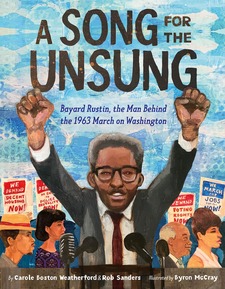
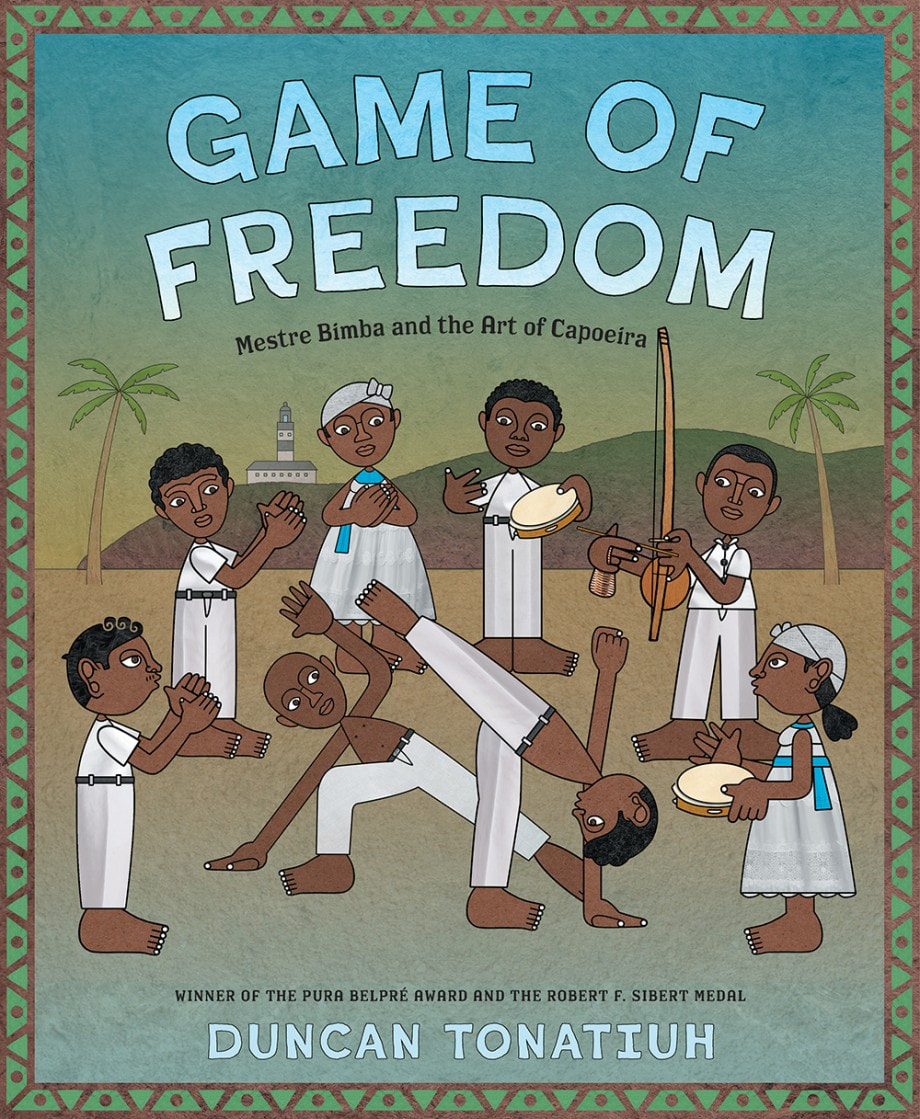
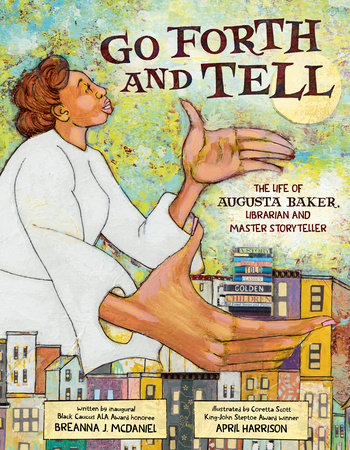
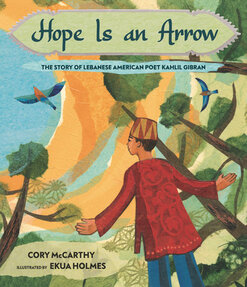
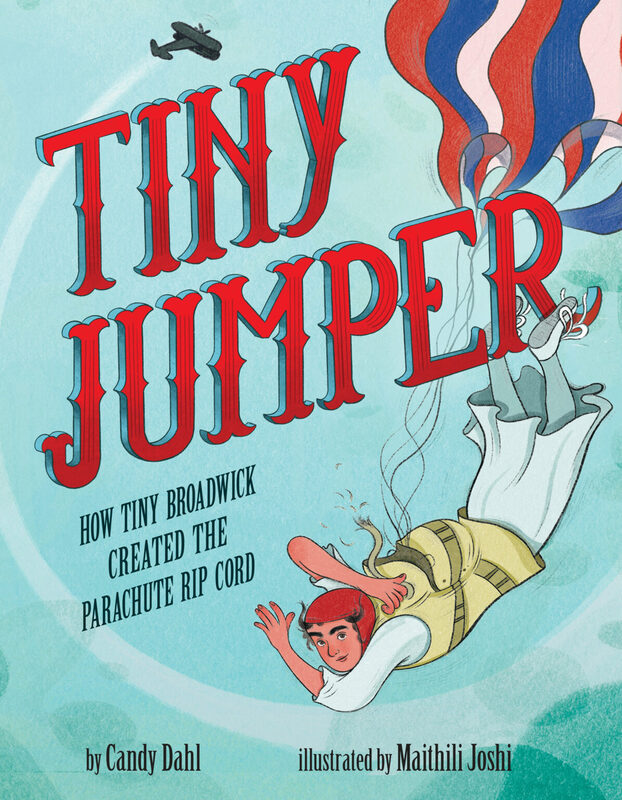
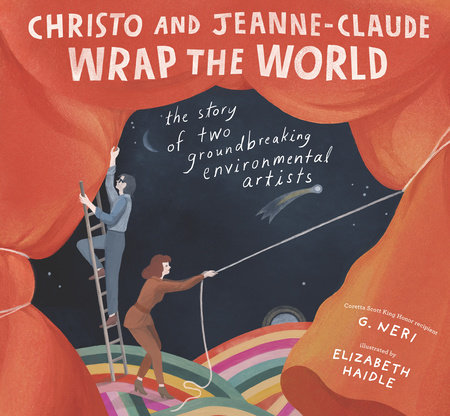

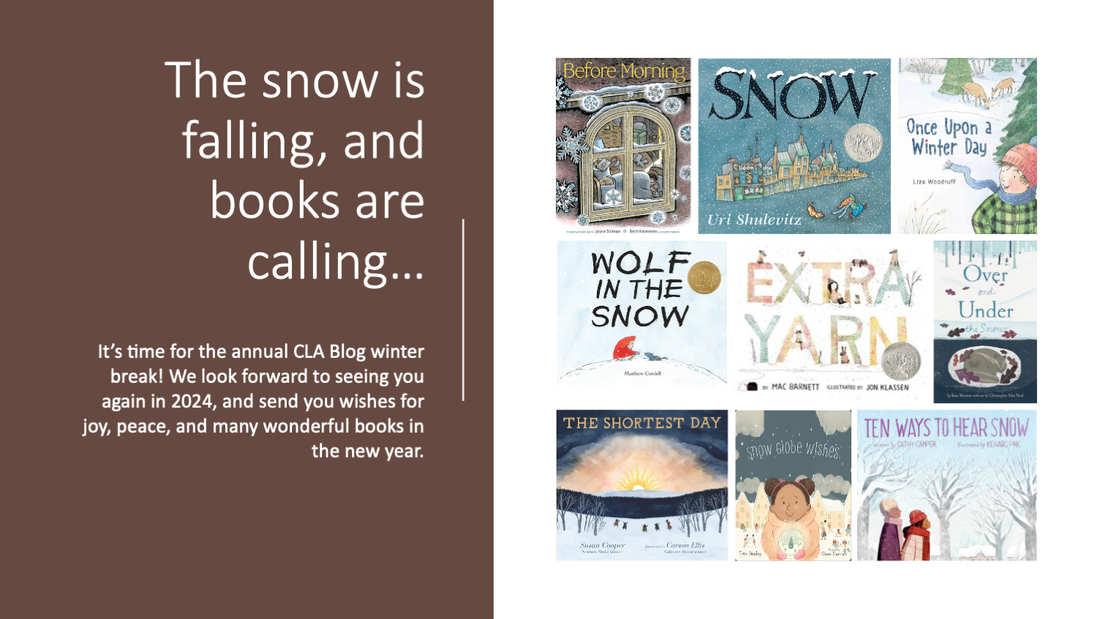


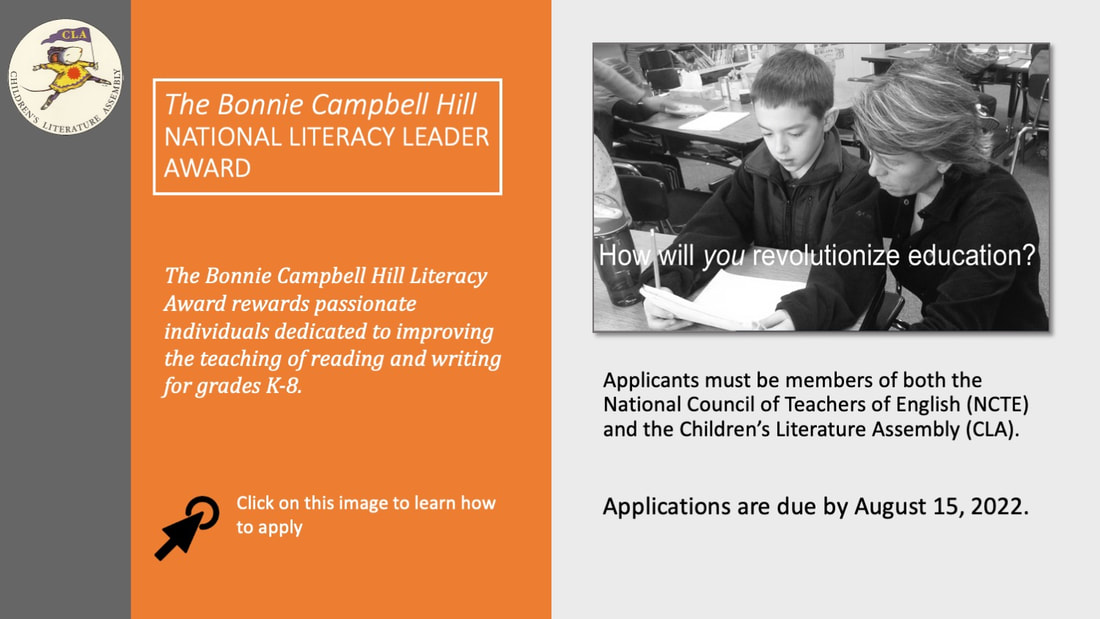


 RSS Feed
RSS Feed